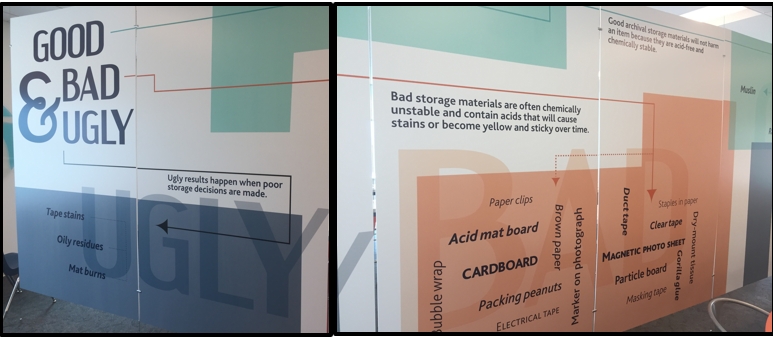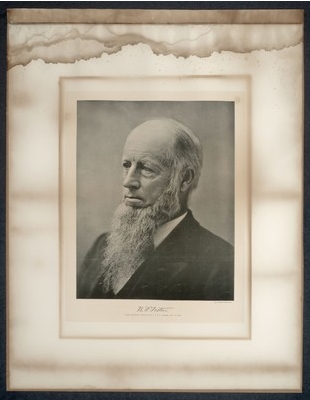Michele Hamill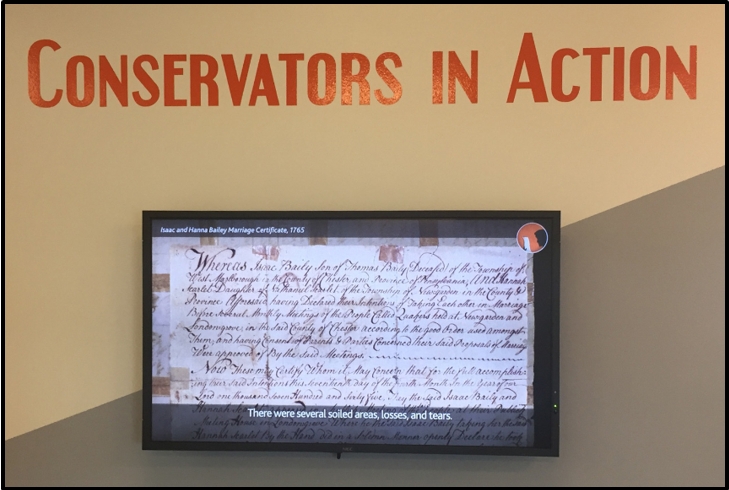 During a recent visit to the beautiful conservation lab of the Indiana Historical Society (IHS) for a workshop on pre-coated repair materials, we had the opportunity to tour their History Lab . The History Lab is dedicated to advancing the public’s knowledge about conservation and preservation.
During a recent visit to the beautiful conservation lab of the Indiana Historical Society (IHS) for a workshop on pre-coated repair materials, we had the opportunity to tour their History Lab . The History Lab is dedicated to advancing the public’s knowledge about conservation and preservation. Be still my conservator’s heart! An entire exhibit space and teaching facility encouraging the exploration of how IHS collections are preserved, what visitors of all ages can do to extend the life of their family collections, and learn about the different processes involved in making photographs, books, and paper artifacts.
Be still my conservator’s heart! An entire exhibit space and teaching facility encouraging the exploration of how IHS collections are preserved, what visitors of all ages can do to extend the life of their family collections, and learn about the different processes involved in making photographs, books, and paper artifacts.

An engaging and fun interactive display lets visitors explore a variety of artifacts and manufacturing processes in depth.

The components of this cased photograph, a tintype (a unique photographic image on a lacquered iron base), are displayed to illustrate the complex, composite nature these artifacts.
The History Lab offers a view of the state-of-the-art IHS conservation lab where visitors can see conservation in action; hands-on activities, like stabilizing paper documents; and many displays –good vs. bad paper; a recent conservation treatment, and a touchable array of materials used to make artifacts.

The visible effect of all that touching is striking. The white sheet on the far right– with the hole –is paper!
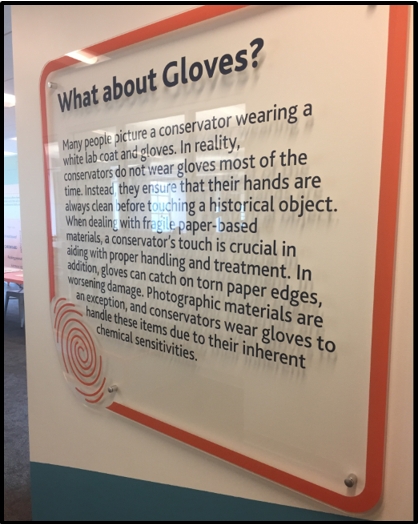
The touch display is paired with an explanation about why conservators don’t generally wear gloves during treatment. Gloves make sense in some reading room situations and with some types of vulnerable collection materials.

A detailed explanation of this conservation project was accompanied by water samples showing the discolored, acidic, degradation products that are released during careful aqueous treatment.

On the left is the instruction space in the History Lab for walk-in visitors, groups, and families to learn about paper conservation stabilization techniques. On the right, is the larger teaching space where the IHS hosts students from colleges and high schools, volunteers, and members from surrounding cultural institutions. The IHS store also sells archival storage boxes and basic mending kits (with instructions) to promote care of collections to its visitors.
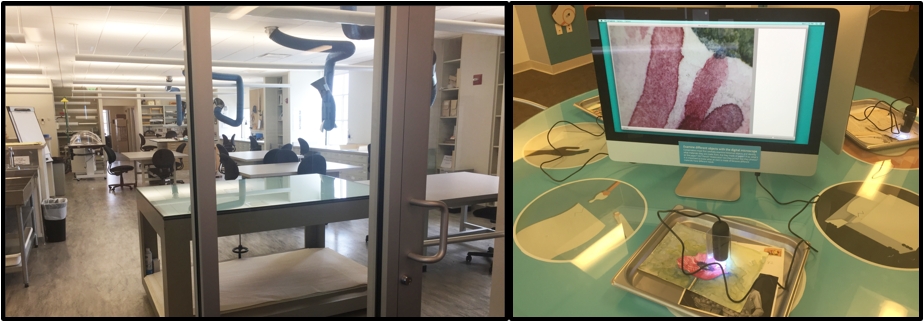
The tools and technology used in conservation are also evident in the History Lab—on the left is a view of the IHS conservation lab and, on the right, the digital microscope exploration station showing a detail of the red watercolor used in the flower illustration.
The History Lab is welcoming, engaging, and instructive. What a wonderful way to promote how conservation benefits collections, and as a powerful teaching tool about the material culture in our everyday lives. It was also a good prompt to share what we do here at Cornell so stay tuned for a recap on the pre-coated repair materials workshop held at IHS and how we may use those techniques on our collections, and a fascinating look at squeezes (paper cast impressions) from the Parthenon. Conservators in action!
